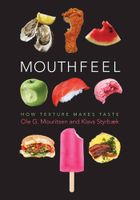Advertisement
Temperature Control
Appears in
By Ole Mouritsen and Klavs Styrbæk
Published 2017
Even though thermometers have been in the culinary tool kit for centuries, cooks generally rely on their knowledge of how water behaves at the freezing and boiling points to effect fairly accurate temperature control. Most raw ingredients have a very high water content, which determines their response to warming and cooling. For this reason, it is often sufficient for a recipe to state that whatever is being prepared must be brought to the boiling point, because this is easily seen when bubbles start to appear. In fact, this is not a particularly precise instruction, as the actual boiling point is raised or lowered depending on the makeup of the liquid—for instance, a clear broth and a creamy soup will start to boil at a different temperature.

